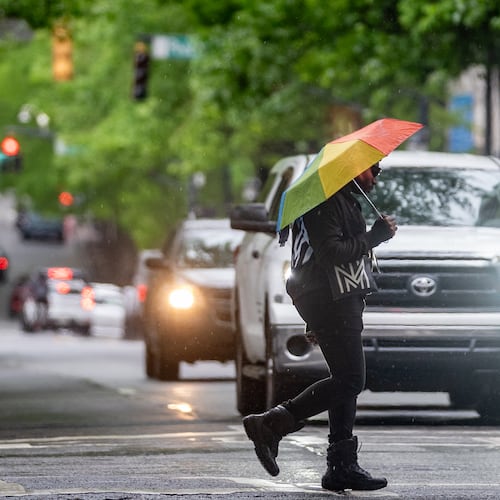You’ve probably heard it from Northern transplants a thousand times: “Southerners don’t know how to drive in the snow.”
There might be some truth to that, because most of us encounter only one or two snowfalls a year, which doesn’t give us much chance to hone our snow-driving skills. And while drivers in snowier areas may have invested in snow tires and all-wheel-drive vehicles, we may not be as prepared.
If you’re from the South, these tips from the National Highway Traffic Safety Administration, the Federal Emergency Management Agency, Edmunds and AJC.com will tell you what you need to know about how to drive in the snow:
Be prepared: Always have an emergency kit in your car in the winter. Include items like a blanket, shovel, ice scraper and emergency flares.
Stay informed: Stay aware of road conditions by dialing 511 and pay attention to changing weather forecasts.
Travel main roads when possible: Travel main roads as much as you can, since they’re more likely to have been salted and sanded. They’re also more likely to have more traffic that has plowed through some of the snow. For updated traffic information, listen to News 95.5 and AM 750 WSB and follow @ajcwsbtraffic on Twitter.
Leave space between you and the vehicle in front of you: It often takes longer to stop if the road has snow or ice on it, so leave plenty of room between you and the car in front of you.
Inspect your vehicle: Before heading out, make sure your windshield wipers and front and rear defrosters are in good working order. Also check your tires to make sure they have good tread and are properly inflated. And don’t forget to make sure your headlights, taillights and brake lights are working properly. Other drivers will need to see you, even if visibility is decreased.
Drive slowly: Transplants from the North might pass you, but it pays to drive slowly on ice or snow. Your car will be harder to control in these conditions, and by driving slowly, you’ll be less likely to lose control of your vehicle. In addition, you’ll be better able to make corrections if you run into black ice or other unexpected conditions.
Be gentle when braking and accelerating: Pretend there’s an egg between your foot and the accelerator, and you’ll avoid some sudden moves that contribute to skids. Also apply brakes gently rather than stomping down on them suddenly.
Know your brakes: Make sure you know if you have anti-lock brakes. If you do, you’ll need to apply firm, continuous pressure to brake efficiently. If your brakes aren’t anti-lock, you’ll need to gently pump them.
Know how to respond if you’re skidding: Skidding can be frightening, but if you find yourself in a rear tire skid — commonly known as “fishtailing” — take your foot off the gas and brake and steer carefully in the direction want to go. If your front wheels are skidding, ease off the gas and gently apply the brakes.
Don’t overestimate all-wheel drive: All-wheel drive provides traction and helps prevent fishtailing, but since it won’t help you stop, it can give you a false sense of security. Even if your vehicle has all-wheel drive, proceed with caution, drive slowly, and leave enough room between your vehicle and the one in front of you.
About the Author
The Latest
Featured

